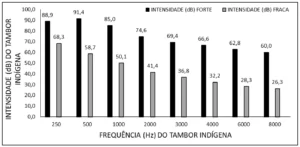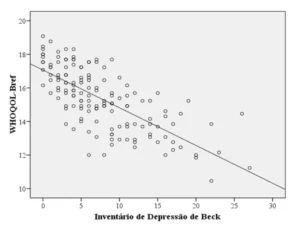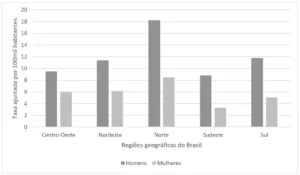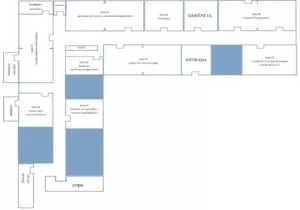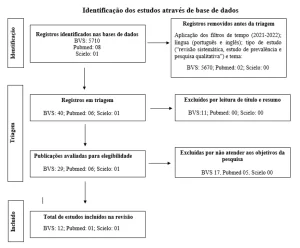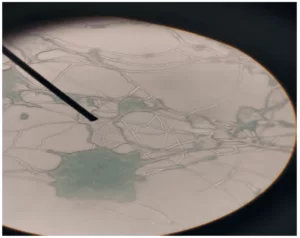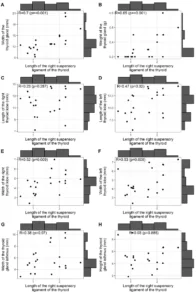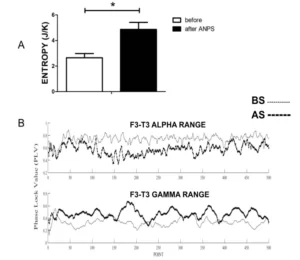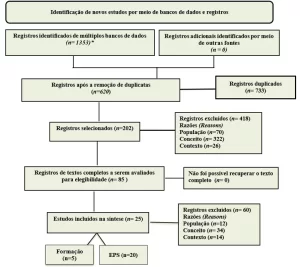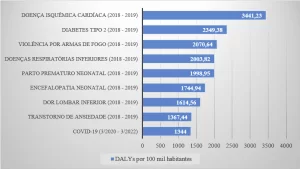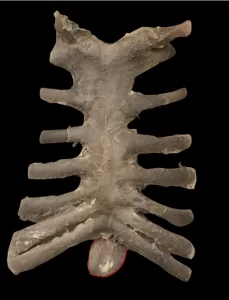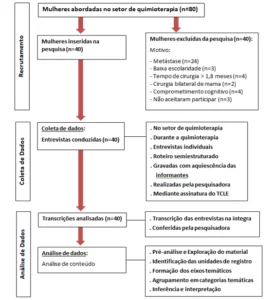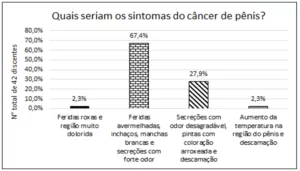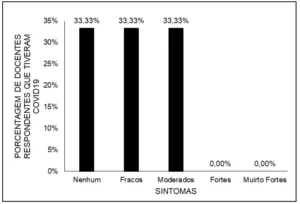INTEGRATIVE REVIEW
ARAÚJO, Eronice Ribeiro de Morais [1], NASCIMENTO, Francisco Sales Rodrigues do [2]
ARAÚJO, Eronice Ribeiro de Morais. NASCIMENTO, Francisco Sales Rodrigues do. Epidemiological profile of deaths from sepsis in the state of Piauí. Revista Científica Multidisciplinar Núcleo do Conhecimento. Year. 07, Ed. 06, Vol. 04, p. 55-63. June 2022. ISSN: 2448-0959, Access link: https://www.nucleodoconhecimento.com.br/health/deaths-from-sepsis, DOI: nucleodoconhecimento.com.br/health/deaths-from-sepsis
ABSTRACT
Context: sepsis is a dysfunction resulting from an infection in the organs caused by irregular inflammation in the body, and in severe cases it causes vasodilation and a decrease in blood pressure. Therefore, this research had as its guiding question: what is the epidemiological profile of deaths from sepsis in the state of Piauí? Objective: with this, the objective of this article was to map the epidemiological profile of deaths from sepsis in the state of Piauí-PI, contributing with knowledge to public health managers, so that they can organize strategies to combat sepsis, detecting and performing the treatment of the pathology in a preliminary way. Methodology: this is a retrospective epidemiological survey, carried out on the DATASUS[3] platform in May 2022, referring to deaths from sepsis in the state of Piauí-PI, belonging to the period from January 2018 to December 2021, in which data such as: age group, sex and color/race of individuals over 20 years of age were included. Results: with this research, it was possible to analyze the epidemiological profile of patients with sepsis in the State of Piauí-PI. Thus, regarding the age group, it was observed that the profile most affected by deaths from septicemia corresponds to those who are over 65 years of age, and those who are most likely to suffer from the pathology are those who are 80 years of age or older, with an incidence of 28.37%. Thus, regarding the number of deaths recorded during the four years researched in relation to sex, it was found that the female represented a percentage of 50.46%, while the male represented 49.49%. And, as for color/race, it was evidenced that the patients who most die from septicemia are those who declare themselves as brown followed by yellow and white. Considerations: in view of this, it is expected with this study that the epidemiological authorities remain on alert in the prevention of sepsis, because during the study it was possible to observe that the mortality rate is higher in elderly patients.
Keywords: Sepsis, Epidemiological, Death, Profile.
1. INTRODUCTION
The word Sepsis is derived from the Greek term skeptikós and was first described by Hippocrates in 460-377 BC. Therefore, it is related to the decomposition of bodies when there is a compromise of cells, causing the death of biological material (ILAS, 2015). This condition, in turn, is characterized by a dysfunction resulting from an infection in the organs caused by an irregular inflammation of the body (WESTPHAL, et al., 2018).
Therefore, sepsis is a biological disorder that acts in a hostile way to secondary life, responding irregularly to the host of an infection (DOS SANTOS, et al., 2019).
Therefore, it is estimated that worldwide, about 15 to 17 million individuals have sepsis per year, and approximately 670,000 of these reported cases are from Brazil (LOBO, et al., 2019). In this sense, studies indicate that the mortality of this pathology corresponds to 240 thousand deaths per year and of the beds in the Intensive Care Unit (ICU) in the country, 30% are occupied by patients with this condition (ILAS, 2016).
In the Sequential Organ Failure Assessment (SOFA) score, due to contamination, the pathological disorder increases by two points (DE ALMEIDA et al., 2018).
According to AMIB (2019), it is characterized as Systemic Inflammatory Response Syndrome (SIRS) when at least two of the following signs are present: core temperature below 36º C or above 38.3º C; heart rate greater than 90 bpm; respiratory rate above 20 bpm; PaCO2 lower than 32 mmHg; need for mechanical ventilation; total leukocytes > 12000/mm3 or < 4000/mm3 or > 10% young forms. However, it is opportune to point out that secondary SIRS concerns a proven malefic action or hypothesis without requiring the recognition of the etiological agent.
In view of this, sepsis causes angiotelectasis in the patient and a decrease in blood pressure, which can cause septic shock in the individual (COREN-SP, 2017). In this case, the body releases inflammatory substances that increase and facilitate the extravasation of fluids to the organs and the whole body. This type of change that occurs in the circulatory system decreases the oxygen and nutrients of the body and, thus, causes hypoxia and multiple organ failure (SILVEIRA; FERREIRA; LAGE, 2014).
In this aspect, septic shock is characterized by the acute failure of the circulatory system determined by the insistence of arterial hypotension in a patient with this disease. Thus, this hypotension is defined as “systolic blood pressure < 90 mmHg, reduction of > 40 mmHg from baseline, or mean blood pressure < 60 mmHg, despite adequate volume replacement, requiring vasopressors, in the absence of other causes of hypotension” (AMIB, 2019, p. 2).
Given this context, some studies indicate that sepsis is a public health problem. Therefore, as it is a topic of great relevance, this research sought to answer the following guiding question: what is the epidemiological profile of deaths from sepsis in the state of Piauí? Therefore, with the objective of mapping the epidemiological profile of deaths from sepsis in the State of Piauí-PI, contributing with knowledge to public health managers, so that they can organize strategies to combat sepsis, detecting and carrying out the treatment of sepsis pathology in a preliminary way. Therefore, a bibliographic-exploratory research was carried out in order to point out the epidemiological profile of deaths from sepsis between the years 2018 to 2021 in the State of Piauí.
2. METHODOLOGY
This is a cross-sectional, descriptive and retrospective research, of an epidemiological nature, which was based on data provided and taken from the SUS[4] Hospital Information System (SIH/SUS) database (DATASUS).
The data extracted on the platform in May 2022 corresponded to the period from January 2018 to December 2021, covering the cases of confirmed deaths in the State of Piauí-BR. Thus, the variables evaluated in the results were: deaths according to processing, according to age group, sex and color/race from the Morb ICD-10 list: Septicemia.
These epidemiological data were filtered for studies through the TABNET application, using its option boxes (row, column and content). Thus, as secondary data extracted from a public domain database, it was not necessary to submit the work to the Research Ethics Committee (CEP).
Finally, the methodology used also used scientific articles from electronic databases, such as Google, SciELO, ILAS (Latin American Institute of Sepsis), AMIB (Association of Brazilian Intensive Medicine) and Coren-SP, as well as works of public and private universities according to the keywords: epidemiological profile of sepsis, Public Health and death.
This is a cross-sectional, descriptive and retrospective research, of an epidemiological nature, which was based on data provided and taken from the SUS Hospital Information System (SIH/SUS) database (DATASUS).
The data extracted on the platform in May 2022 corresponded to the period from January 2018 to December 2021, covering the cases of confirmed deaths in the State of Piauí-BR. Thus, the variables evaluated in the results were: deaths according to processing, according to age group, sex and color/race from the Morb ICD-10 list: Septicemia.
These epidemiological data were filtered for studies through the TABNET application, using its option boxes (row, column and content). Thus, as secondary data extracted from a public domain database, it was not necessary to submit the work to the Research Ethics Committee (CEP).
Finally, the methodology used also used scientific articles from electronic databases, such as Google, SCIELO, ILAS (Latin American Institute of Sepsis), AMIB (Association of Brazilian Intensive Medicine) and Coren-SP, as well as works of public and private universities according to the keywords: epidemiological profile of sepsis, Public Health and death.
3. RESULTS AND DISCUSSION
With this research, it was possible to analyze the epidemiological profile of deaths from sepsis in the State of Piauí-PI, as well as to characterize the epidemiological profile of these patients.
Table 1. Deaths according to age group of patients data from the Ministry of Health – SUS Hospital Information System (SIH/SUS) – DATASUS.
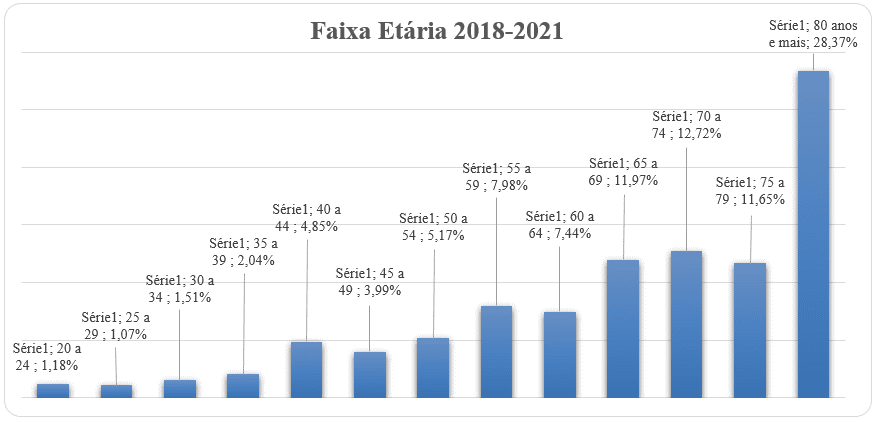
Through these data, it is possible to observe that the age group most affected by deaths from septicemia concerns those over 65 years of age, and the percentage of mortality among individuals aged 65 to 79 years is 11.97%. , from 70 to 74 years old is 12.72%, from 75 to 79 years old is 11.65% and from 80 years old and over is 28.37%. This reveals that the disease attacks especially elderly individuals, causing a public health crisis.
From this perspective, it is noteworthy that other cross-sectional studies based on ICD10 notifications – septicemia, in Brazil, also showed this phenomenon, noting that the patients who die most from this pathology are over 70 years old (JÚNIOR; GOMES , 2020).
On the other hand, the following table presents this data under the function of another variable.
Table 2. Deaths according to patient sex data from the Ministry of Health – SUS Hospital Information System (SIH/SUS) – DATASUS.
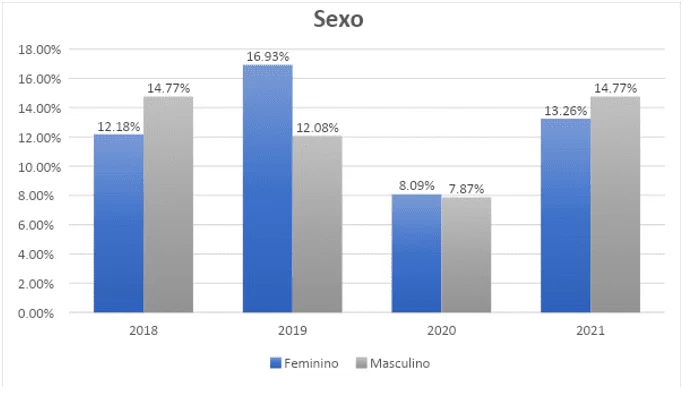
Based on the data presented above, it was found that the incidence of deaths was higher in female patients (50.46%) than in male patients (49.49%).
However, in a survey carried out in Alagoas, with 7,764 cases of hospitalization of patients with sepsis, from 2012 to 2017, it was observed that male patients were the most affected by the disease with 4,172 cases (53.73% ), while female patients were less affected, representing only 3,592 cases (43.26%) (SANTOS, et al., 2018).
Thus, research carried out at the Hospital Público do Paraná, with data from January 2012 to January 2017, also found that of the 1,557 medical records evaluated, 345 (62.3%) were male and 209 (37.7%) were male. female, and 25.8% of these patients were over seventy years old (DE CESARO; ZONTA, 2019).
Table 3. Deaths according to color/race of patients data from the Ministry of Health – SUS Hospital Information System (SIH/SUS) – DATASUS.
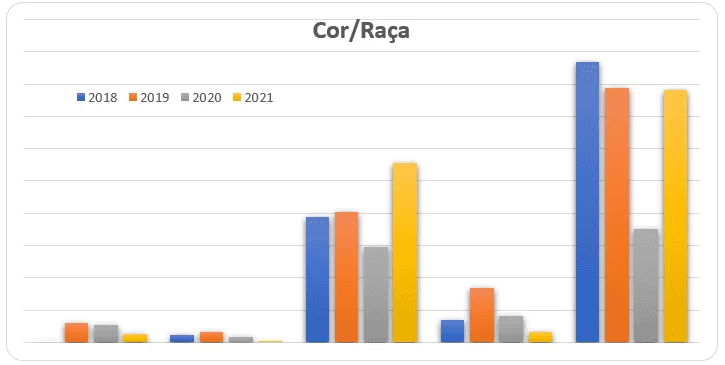
As for the color/race characteristic, it was observed that the patients who most died from septicemia were those who declared themselves to be brown followed by yellow and white. While those who declare themselves as being of black color/race are the least likely to die.
However, it was also found that the percentage of those who die without information on color/race is higher than those who do. As a result, it is necessary for the public power to create policies to identify the color/race of these patients and to know what their vulnerabilities are to diseases and infections in order to facilitate the prevention and treatment of the pathology.
4. FINAL CONSIDERATIONS
This research sought to answer the guiding question: what is the epidemiological profile of deaths from sepsis in the state of Piauí? In order to map the epidemiological profile of deaths from sepsis in the State of Piauí-PI.
Therefore, it is expected with this study that the epidemiological authorities remain alert in the prevention of sepsis, because during the study it was possible to observe that the mortality rate is higher in elderly patients.
The data presented showed that between January 2018 and December 2021, the profile of the individuals who died the most showed characteristics of being elderly, female and of mixed race.
Therefore, it is noteworthy that mapping the epidemiological profile of patients affected by sepsis can provide better prevention and care, which can reduce mortality and recover health indicators in the face of septicemia.
Therefore, professionals must be prepared to diagnose the disease early. It is also necessary that public health authorities take responsibility for carrying out this mapping in a responsible way to improve the indicators, through the Ministry of Health. With this, it is expected that future studies can present more real values on sepsis.
REFERENCES
AMIB. Associação de Medicina Intensiva Brasileira. Conceitos e epidemiologia da sepse. São Paulo, v.1, p. 6-23, 2019. Disponível em: https://cssjd.org.br/imagens/editor/files/2019/Maio/sepse(1).pdf. Acesso em: 8 set. 2021.
DATASUS. Ministério da Saúde Sistema de Informações Hospitalares do SUS (SIH/SUS). Disponível em: https://datasus.saude.gov.br/informacoes-de-saude-tabnet/. Acesso em: 01 mai. 2022.
DE ALMEIDA, Breda Macedo; SILVA, Renata Bonfim de Lima; DA SILVA, Joana D`arc Gonçalves. Sepse em queimados, análise de incidência e mortalidade da sepse em pacientes internados na unidade de tratamento de queimados do Hospital Regional da Asa Norte. Programa de Iniciação Científica-PIC/Uniceub-Relatórios de Pesquisa, Brasília, 3(1). p. 8-9, 2018. DOI: https://doi.org/10.5102/pic. n. 3. 2017.5871. Disponível em: https://www.publicacoesacademicas.uniceub.br/pic/article/view/5871. Acesso em: 13 mai. 2022.
DE CESARO, Maiara Cristina; ZONTA, Franciele do Nascimento Santos. Epidemiológico de pacientes de uma UTI em um hospital público do Paraná que desenvolveram sepse. Brazilian Journal of Health Review, v. 2, n. 1, p. 501-506, 2019. Disponível em: https://brazilianjournals.com>BJHR>article>view. Acesso em: 01 mai. 2022.
DOS SANTOS, Allana Fernanda Sena et al. Perfil das autorizações de internação hospitalar por sepse no período de 2012 a 2017 em Alagoas, Brasil. Revista de pesquisa em Saúde, Maceió, Alagoas, v. 19, n. 2. p. 79-82, mai-ago, 2018. Disponível em: https://periodicoseletronicos.ufma.br/index.php/revistahuufma/article/view/10954. Acesso em: 4 mai. 2022.
DOS SANTOS, Mayara Rocha et al. Morte por sepse: causas básicas do óbito após investigação em 60 municípios do Brasil em 2017. Rev Bras Epidemiol, São Paulo, v. 22, n. 3, p. 1-14, 28 nov. 2019. https://doi.org/10.1590/1980-549720190012.supl.3 Disponível em: https://scielosp.org/artcle/rbepid/2019.v22suppl3/e190012.supl.3. Acesso em: 26 set. 2021.
ILAS. Instituto Latino-Americano de Sepse. Perfil epidemiológico da sepse em uma unidade de terapia intensiva neonatal de hospitais brasileiros. 2016. Disponível em: https://ilas.org.br/spread-neo.php. Acesso em: 4 set. 2021.
JÚNIOR, Adriano Menino de Macedo; GOMES, Simar Torres. Perfil epidemiológico dos óbitos ocasionados pela septicemia, na região Nordeste do Brasil, Estado do Rio Grande do Revista Nordestina de Biologia. Natal, Rio Grande do Norte, v. 28, n. 1, 2020. DOI: https://doi.org/10.22478/ufpb.2236-1480.2020v28n1.53198. Disponível em: https://periodicos.ufpb.br/index.php/revnebio/article/view/53198. Acesso em: 6 mai. 2022.
LOBO, Suzana Margareth et al. Mortalidade por sepse no Brasil em um cenário real: projeto UTIS brasileiras. Revista Brasileira de Terapia Intensiva, São José do Rio Preto, São Paulo, v. 31, n. 1, p. 1-4, 2019. DOI: 10.5935/0103-507X.20190008. Disponível em: https://www.scielo.br/j/rbti/a/XD867yzfcJGNpnMKhQg8wyb/?format=pdf&lang=pt. Acesso em: 25 set. 2021.
SILVEIRA, Sylvia Rocha e; FERREIRA, Luiz Fernando Lucas; LAGE, Maíra Harumi Higa. Fisiopatologia da sepse: revisão de literatura. PUBVET, Londrina, v. 8, n. 9, Ed. 258, p. 4-41, mai. 2014. Disponível em: https://www.pubvet.com.br/artigo/1200/fisiopatologia-da-sepse-revisatildeo-de-literatura. Acesso em: 19 nov. 2021.
VIANA, Renata Andréa Pietro Pereira; MACHADO, Flavia Ribeiro; SOUZA, Juliana Lubarino Amorim de. Sepse: um problema de saúde pública. A atuação e colaboração da Enfermagem na rápida identificação e tratamento da doença. São Paulo, COREN-SP, 2017. Disponível em: https://www.ilas.org.br/assets/arquivos/ferramentas/livro-sepse-um-problema-de-saude-publica-coren-ilas.pdf. Acesso em: 15 set 2021.
WESTPHAL, Glauco Adrieno et al. An electronic warning system helps reduce the time to diagnosis of sepsis. Rev Bras Ter Intensiva, São Paulo, v. 30, n. 4, p. 414-422, 2018. DOI: 10.5935/0103-507X.20180059. Disponível em: https://www.scielo.br/j/rbti/a/CRkKhmpYhjCTJSz8t9Ws6rK/?lang=en. Acesso em: 12 set. 2021.
APPENDIX – FOOTNOTE
3. Department of Informatics of the Unified Health System.
4. Health Unit System.
[1] Master’s in Nursing from the Federal University of Piauí, Brazil. ORCID: 0000-0003-0055-8189.
[2] Graduating in Nursing. ORCID: 0000-0001-5103-3644.
Sent: May, 2022.
Approved: June, 2022.

